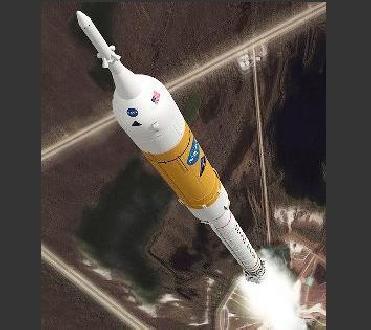
Hubble Space Telescope. Image Credit:NASA
For millions of years, space was out of reach for humans stranded here on Earth. All that we knew about our universe came through observations with the naked eye. Then, in 1609, Galileo Galilei pioneered modern explorations by making a telescope with about 3x magnification. He later made others with up to about 30x magnification.
The Hubble Space Telescope which is named after the astronomer Edwin P. Hubble is the first major optical telescope to be placed in space. Above the distortion of the atmosphere, far far above rain clouds and light pollution, Hubble has an unobstructed view of the universe. Scientists have used Hubble to observe the most distant stars and galaxies as well as the planets in our solar system.
Hubble has beamed hundreds of thousands of images back to Earth, shedding light on many of the great mysteries of astronomy. Its gaze has helped determine the age of the universe, the identity of quasars, and the existence of dark energy. Hubble has revealed the age of the universe to be about 13 to 14 billion years.
The Hubble, launched in 1990, is a telescope that orbits Earth. The Telescope is a cooperative programme of the European Space Agency (ESA) and the National Aeronautics and Space Administration (NASA) to operate a long-lived space-based observatory for the benefit of the international astronomical community. Hubble is an observatory first dreamt of in the 1940s, designed and built in the 1970s and 80s, and became operational only in the 1990s.
The Hubble Space Telescope is a powerful orbiting telescope that provides sharper images of heavenly bodies. It is a reflecting telescope with a light-gathering mirror 94 inches in diameter.
In orbit about 380 miles above the earth Hubble completes a spin around Earth, every 90 minutes. As it travels, Hubble's mirror captures light and directs it into its several science instruments. It can also observe ultraviolet and infrared light that is blocked by the atmosphere. These forms of light, like visible light, are electromagnetic radiation. Once the mirror captures the light, Hubble's science instruments work together or individually to provide the observation. Each instrument is designed to examine the universe in a different way.
The Hubble Space Telescope has two kinds of instruments. First, the imagers, which take pictures and second, the spectrographs, which analyse light. Imagers are electronic detectors called charge coupled devices (CCD's). The CCD's convert light into electronic signals, which an on-board computer records and sends to the ground.
NASA Goddard Space Flight Center in Greenbelt, MD performs the daily orbital operations, servicing mission development, and overall management of the Hubble Program. The Space Telescope Science Institute (STScI) in Baltimore, MD develops and executes Hubble's scientific programme and is managed by the Association of Universities for Research in Astronomy (AURA) under contract to NASA.
- Courtsey: NASA.
 Previous Article
Previous Article Next Article
Next Article













The Indian Air Force, in its flight trials evaluation report submitted before the Defence Ministry l..
view articleAn insight into the Medium Multi-Role Combat Aircraft competition...
view articleSky enthusiasts can now spot the International Space Station (ISS) commanded by Indian-American astr..
view article